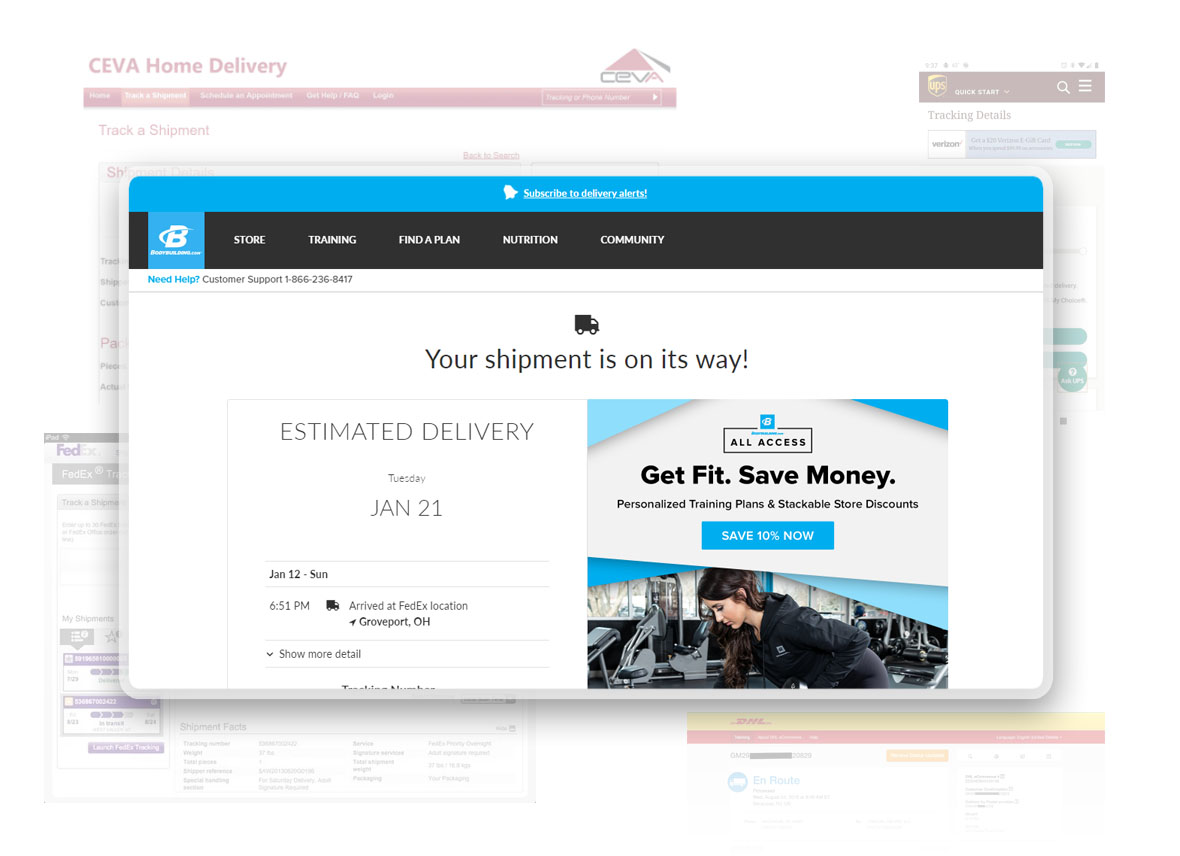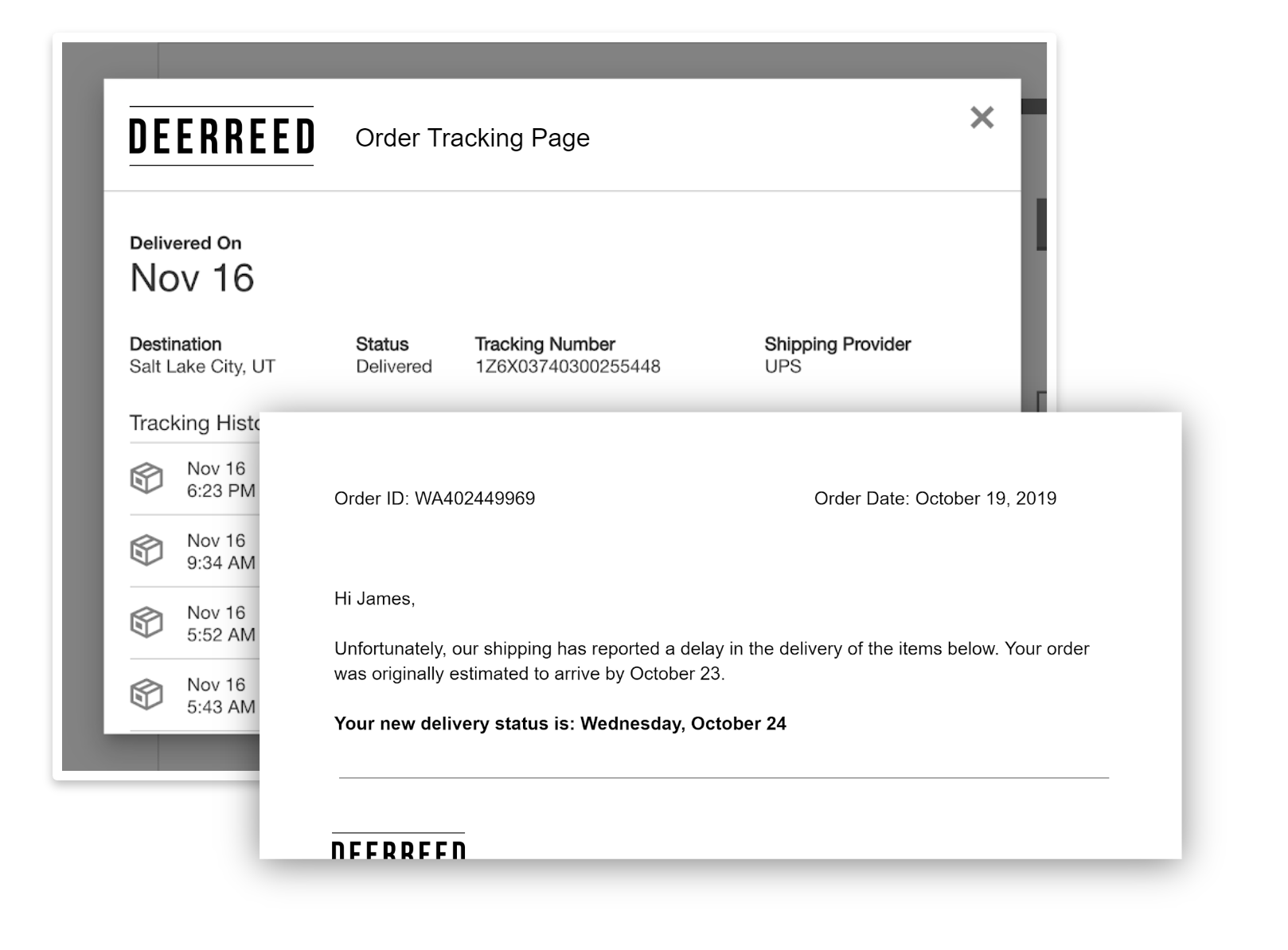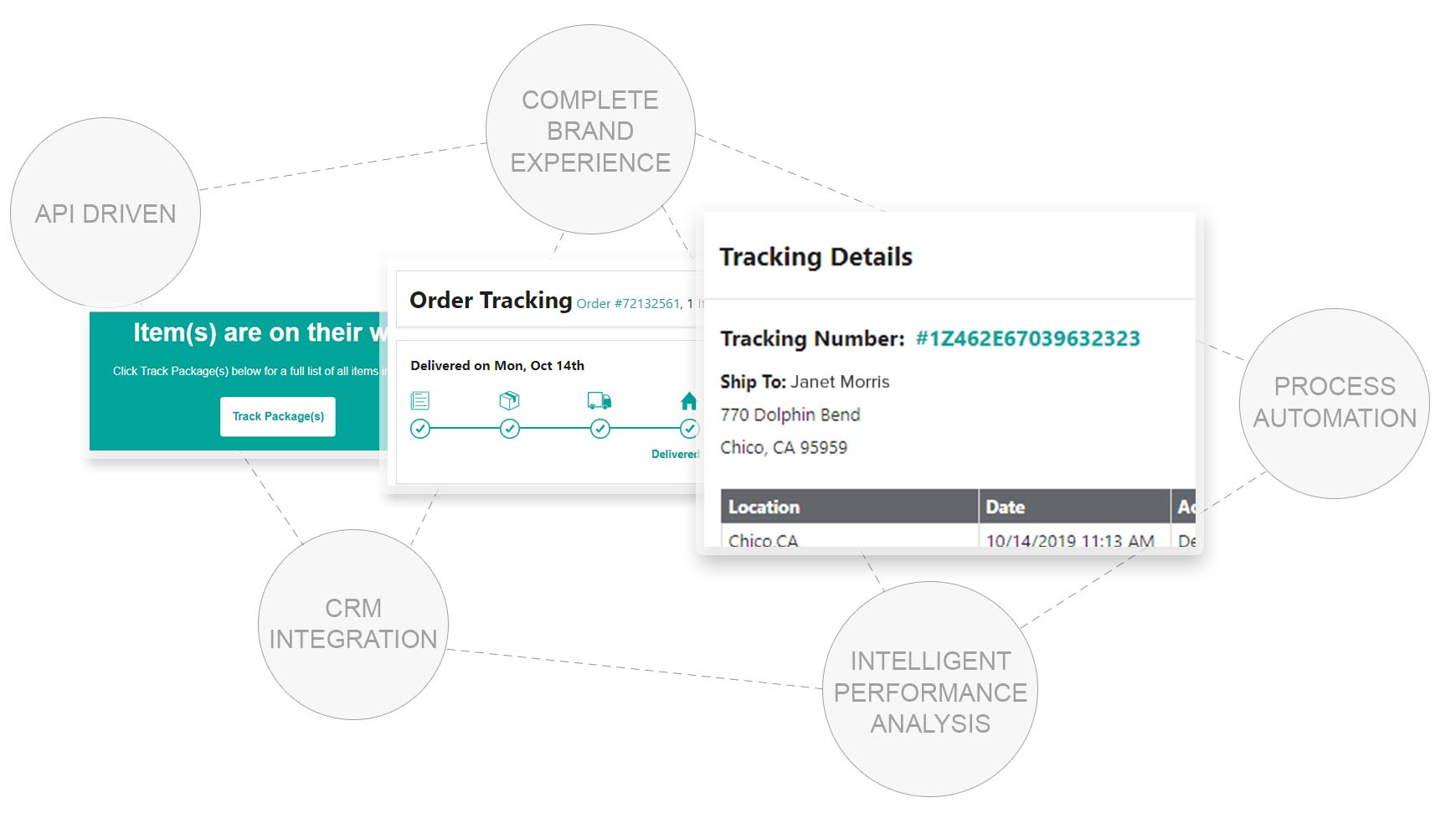Ecommerce is the fastest growing area of retail – online sales are projected to reach $27.2T by 2021 — and recent global events are spiking eCommerce orders as consumers spend less time in stores. Meanwhile, marketing teams have spent the last 5 to 10 years optimizing nearly every part of their funnel to win new customers, and they are running low on tactics to squeeze out another few basis points of conversion. That is why engagement, retention and lifetime value are becoming increasingly important. There are too many lessons to learn about businesses who cannot buy their way to profitability with new customers – all brands and retailers must develop customer loyalty to thrive.
Ecommerce delivery is often the only physical touchpoint that a consumer has with a brand, making that experience critical to long term engagement. 99% of consumers expect post-purchase communication from their retailers, keeping them up to date on the delivery status and collaborating with them if an issue arises. What is surprising is how many retailers are still leaving that communication touchpoint to another brand. Outsourcing the actual shipping to partners is logical, but losing brand control and communication to a carrier is not only a missed opportunity, but puts brands at risk of high customer churn. According to our research, 73% of customers will not return after a poor delivery experience.
The good news is that sophisticated brands have been tailoring that delivery communication for a while. They are evolving what once was a basic branded tracking page into an integrated customer experience (CX) that can drive real upside. Within Convey’s customer base, we are observing a trend to bring more of this experience in-house, leveraging partner data to create unique account pages and branded digital environments that support the unique customer engagement goals of each brand. Regardless of your level of sophistication, there is an approach that can reduce WISMO calls (WISMO stands for ‘Where is My Order’), increase engagement, satisfaction and even drive revenue.
Crawl: Create Transparency With Basic Branded Tracking And Alerts
After customers click the ‘buy button,’ the most basic and common way to keep customers engaged is with a branded tracking page and alerts (most common are email and SMS). There are a number of tracking page players who provide this capability. It’s an excellent way to ensure that your brand is represented without forcing consumers to dig around carrier sites for tracking information. We typically see this baseline capability driving significant WISMO reduction, up to 70%, as well as revenue upside due to lightweight merchandising capabilities. [Calculate how many WISMO calls your team can avoid each year.]
While this approach is a great way to start, brands often outgrow its limitations. Most tools are template-based, limiting brand creativity and consumer engagement. Worse yet, many brands find that having different email systems triggering sends to their customers makes it hard to maintain a unified, on-brand voice and experience. These constraints often lead them to evolve to the ‘Walk’ or ‘Run’ stages.
Walk: Increase Engagement And Consistency By Investing In CX Where It Counts
Clients we work with will often evolve to a blended approach of post-purchase communication, and there are two separate ways they do this:
- Use a third-party tool like Convey to power the alerts, leveraging our APIs and data to feed much more robust brand-owned tracking pages and experiences.
While this still has a variety of senders reaching out to shoppers, it creates more powerful engagement once shoppers visit tracking or ‘My Account’ style pages. - Use a third-party tool like Convey to power the tracking page, leveraging our APIs and data to feed their email, SMS and related customer communications tools.
The ability to unify the communications piece drives cleaner CRM data, analytics and streamlined ability to use their own creative assets for all outbound messaging.
When considering which approach to take, determine where you have the greatest pain and respective upside. With a strong in-house development team and a lot of unique content on your site, driving buyers to the most compelling on-site experience could generate lift. But, if disparate communications lead to high unsubscribe rates or shopper confusion, maybe the second approach will drive the best near-term results.
Run: Power Rich, Branded CX And Communication With Robust Third-Party Data
The most sophisticated brands are taking the delivery communication and engagement step to a whole new level. It’s becoming more common that brands are ingesting delivery data (via unified API) into their own branded ‘My Account’ environments and forgoing the standalone tracking page entirely. The most creative are even ingesting this same data into different environments, like project planning tools or other personalized web experiences.
The more loyalty a retailer generates, the less likely a customer wants to consider shipments in isolation on a tracking page – they want to go back to that brand, see all of their purchases, and be able to understand and manage it from a single pane of glass. This leaves the brand with plenty of real estate to re-engage that shopper for upsell, cross-sell or pure digital surprise and delight. If we see 3.31% of uplift with a basic tracking page, you can imagine how much better it will be as part of an immersive brand experience. To understand if your team can ‘Run,’ consider the level of sophistication your development team has and what you could do with a few more outstanding customer touchpoints powered by robust data.
When it comes to tracking pages, Convey focuses our investment on developing best-in-class data to deliver a mix of powerful tracking events, exceptions and predicted to miss EDD via a scalable API. Sure, we’ve got customizable tracking pages and alerts. But with the market moving toward owning that experience with their own hosted and designed solutions, our tracking page is meant to serve as a temporary module until retailers arrive at their most desirable destination, which is an in-house tracking page powered by Convey’s Shipping APIs.
If you are considering the ‘Walk’ or ‘Run’ approaches above, be sure to ask your data partner how often their data is refreshed, how they normalize data across different statuses, whether they can offer you a variety of distinct and dynamic data sets, and how they’ve integrated with other customer-facing solutions in the past. Your customers rely on that up-to-date communication, and will reward you with their loyalty.
Learn which elements you need to incorporate into your tracking page here, or understand why a seamless customer journey leads to customer retention and advocacy.




